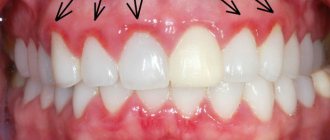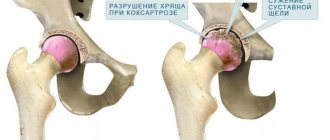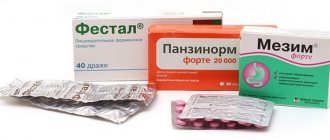What is viral hepatitis D
Viral hepatitis D or delta hepatitis is a chronic liver disease that occurs in the presence of the pathogen Hepatitis deltavirus (HDV) and is a companion disease of hepatitis B. Hepatitis type B begins to develop in the human body simultaneously with type D (co-infection) or the second genotype of the virus begins to act a little later, and provokes the occurrence of superinfection. In any case, a carrier of two genotypes at once experiences accelerated damage to liver cells, which leads to its rapid death in the process of developing cirrhosis or oncological tumors. Among all genotypes, type D is one of the most dangerous - the mortality rate is 20%.
Hepatitis D cannot progress in the body on its own - for this it needs a virus of type B. The deltavirus itself is similar to plant molecules and is a satellite, i.e. it cannot develop in healthy cells. It is believed that the deltavirus simply uses the envelope proteins of the genotype B virus. Once in the bloodstream, it causes an immune system reaction that attacks the liver.
Developing in parallel, genotypes B and D appear more pronounced than genotype C, however, they act much faster. Once in cells, the virus causes the proteomes in liver cells to change, which leads to tissue degeneration and the formation of malignant tumors. The most common outcome of this disease is liver carcinoma.
Causes
The causative agent is a defective RNA containing virus of the genus Deltavirus of the Togaviridae family. It is isolated only from patients infected with virus B. The defectiveness of the pathogen is manifested in the complete dependence of its transmission and reproduction on the presence of virus B. Accordingly, moninfection is absolutely impossible. Virions are spherical in shape, 3537 nm in diameter. The genome is formed by a single-stranded circular RNA molecule. The supercapsid includes a significant amount of virus B HBjAg.
Delta virus, HDV, was discovered in 1977 by Italian researcher M. Rizzetto. It contains RNA and is 35-37 nm in size. The outer shell of HDV is the virus B surface antigen (HBsAg). Due to the absence of its own outer shell, the pathogen is called a “defective” virus (parasitic virus). There are currently 3 known genotypes of the Delta virus. Replication of the Delta virus occurs only in the presence of the causative agent of the HB virus infection. In the liver cell it is localized mainly in the nucleus. The Delta virus antigen is resistant to heat, acids, and ultraviolet irradiation, but is inactivated by alkalis and proteases.
Epidemiology
The source of which symptoms of viral hepatitis D appear are patients with acute and, especially, chronic Delta infection, “healthy” carriers of the Delta virus.
How is hepatitis D transmitted? The mechanism by which the disease is transmitted: blood-contact.
Transmission routes.
Infection with the Delta virus occurs through transfusion of virus-containing blood and its preparations, as well as the use of medical instruments contaminated with virus-containing blood. The risk of infection with the Delta virus is especially high in recipients of donor blood and its products (patients with hemophilia, hematological malignancies, burn patients, etc.), as well as in persons on hemodialysis, whose treatment uses hemosorption, plasmapheresis, etc.
Transplacental transmission of virus D from mother to fetus is possible. However, more often newborns become infected during childbirth or immediately after birth due to contamination of the mother's delta-containing blood through damaged skin and mucous membranes.
Young children and patients with chronic form B are most susceptible to Delta infection.
Hepatitis D virus is detected in 5% of people infected with hepatitis B virus.
Pathogenesis
Entrance gate: the infection enters the human body through damaged skin and mucous membranes, and is introduced into the liver by hematogenous route. The Delta virus is localized mainly in the nuclei of hepatocytes. It affects the genetic apparatus of the liver cell: it is characterized by a direct cytopathic effect with the development of necrosis of hepatocytes. At its height, the following syndromes are observed: cytolysis, cholestasis, dyskinesia of the gallbladder, biliary tract and gastrointestinal tract, mesenchymal inflammation, immunosuppressive effects and hepatocellular failure (hepatoprivacy). The addition of Delta infection to hepatitis B (acute, chronic) or simultaneous infection with B and Delta viruses causes severity of the course (fulminant forms), unfavorable outcomes (liver cirrhosis, primary hepatocellular carcinoma) and high mortality.
Causes and risk factors
The source of a viral infection is always a carrier of the virus, i.e. a patient with hepatitis B and D. Moreover, its ability to infect others varies depending on the viral load - the number of pathogen cells in the blood, but the risk always exists. The likelihood of infecting others increases as the disease moves into the acute phase.
Hepatitis D is transmitted in two ways - through blood and secretions during sexual intercourse. The most likely method of infection is a blood transfusion from a carrier, since donor tests do not always establish the presence of the pathogen. About 0.01-2% of all donors are carriers of undetected hepatitis of various genotypes. In addition, there are a number of other opportunities to obtain the causative virus:
- surgical intervention;
- sexual contact with a carrier;
- invasive medical procedures;
- use of undisinfected instruments.
The pathogen also penetrates the placental barrier, so there is a risk of infection of the child in the womb, while the pathogen does not penetrate into breast milk. The following persons are at risk:
- Having chronic hepatitis B.
- They need blood transfusions or blood products (especially during repeated procedures).
- They often visit incompetent nail salons or self-taught nail salons.
- They use injection drugs.
- Have weakened immunity.
- Tattoos are done in uncertified tattoo parlors.
- Those who refuse hepatitis B vaccination.
- Residents of countries with a high prevalence of HDV.
- They have promiscuous sex without protection.
Studies have shown that about 40% of patients were unable to identify the route of their infection. Migration of people from countries with increased incidence of hepatitis B also affects the epidemiological situation in receiving countries.
Diagnostics
Laboratory research methods
The very first diagnostic tests that the doctor you see are a general blood and urine test:
- a general blood test, in which an increase in leukocytes will be observed, a shift in the leukocyte formula to the left and an increase in ESR (erythrocyte sedimentation rate);
- a general urine test, in which an increase in leukocytes and squamous epithelium in the visual position will be observed.
Changes in these tests indicate an inflammatory reaction in the body; in order to clarify in which organ the pathological process occurs, additional laboratory examination methods are prescribed.
Liver tests:
| Index | Normal value | Significance for hepatitis D |
| Total protein | 64 – 83 g/l | 55 g/l and below |
| Total bilirubin | 8.6 – 20.5 µmol/l | 28.5 – 100.0 µm/l and above |
| Direct bilirubin | 8.6 µmol/l | 20.0 – 300.0 µmol/l and above |
| ALT (alanine aminotransferase) | 5 – 30 IU/l | 30 – 180 IU/l and above |
| AST (aspartate aminotransferase) | 7 – 40 IU/l | 40 – 140 IU/l and above |
| Alkaline phosphatase | 50 – 120 IU/l | 120 – 160 IU/l and above |
| LDH (lactate dehydrogenase) | 0.8 – 4.0 pyruvite/ml-h | 4.0 pyruvate/ml-h and above |
| Albumen | 35 – 50 g/l | 34 g/l and below |
| Thymol test | 1 – 4 units | 4 units and more |
Coagulogram (blood clotting):
| Index | Normal value | Significance for hepatitis D |
| Prothrombin index | 60 – 100% | 60% and below |
| Fibrinogen | 2 – 4 g/l | 2 g/l and below |
| Platelet adhesion | 20 – 50% | 20 – 30 % |
| APTT (active partial thromboplastin time) | 30 – 40 seconds | Less than 30 seconds |
Lipidogram (cholesterol test):
| Index | Normal value | Significance for hepatitis D |
| total cholesterol | 3.11 – 6.48 µmol/l | Less than 3.11 µmol/l |
| triglycerides | 0.565 – 1.695 mmol/l | Less than 0.565 mmol/l |
| high density lipoproteins | 2.2 g/l | Less than 2.2 g/l |
| low density lipoproteins | 35 – 55 units. optical density | Less than 35 units. optical density |
Serological research methods
Tests that can directly determine the marker of viral hepatitis D in the blood serum of a sick person and thereby make a final, accurate diagnosis. Among the examination methods are:
- ELISA (enzyme-linked immunosorbent assay).
- XRF (X-ray fluorescence analysis).
- RIA (radioimmunoassay).
- RSK (complement fixation reaction).
- PCR (polymerase chain reaction) is the most sensitive and expensive method.
Interpretation of results:
| Viral hepatitis D marker | Clinical significance |
| IgM anti-HDV | Indicates active reproduction of the hepatitis D virus |
| IgG anti-HDV | Indicates recent infection with hepatitis D virus |
| HD antigen | Indicates the presence of hepatitis D virus in the body |
| HDV-RNA | Indicates the beginning of viral hepatitis D replication |
Instrumental research methods
- Ultrasound of the liver, which can determine the consequences of viral hepatitis D or its complications (fibrosis or cirrhosis).
- Liver biopsy - taking liver tissue with a needle under ultrasound control, followed by examination under a microscope. The method makes it possible to establish an accurate diagnosis and the presence of complications, but is invasive (penetrating) and therefore has not become widely used for viral hepatitis D.
Symptoms and forms of the disease
Since genotype D develops against the background of existing hepatitis B, the symptoms of the disease intensify, appearing in the early stages. Signs of hepatitis D and B are similar and similar to those of jaundice:
- weakness;
- constant fatigue;
- lack of appetite;
- pain in the stomach and liver;
- insomnia;
- nausea;
- yellowed skin;
- change in the color of urine and stool.
The first symptoms appear 2-3 weeks after infection, depending on the strength of the patient’s immunity. Hepatitis D has three forms:
- Incubation is the time from the moment of infection to the onset of the disease. The period lasts about 21-50 days and is often asymptomatic (slight fatigue and lack of appetite are possible).
- Preicteric – at this time the first signs appear. The stage lasts 4-10 days, during which the person is constantly tired, experiences sudden changes in body temperature and pain in the joints and muscles of the body. Most often, the preicteric form of hepatitis D occurs without specific signs (yellowing of the skin or changes in the color of urine), so patients do not pay much attention to other ailments.
- Jaundice is a form of a virus that flourishes in the blood, which begins to actively multiply and infect the liver. The patient's eyeballs and skin turn yellow, pain appears in the stomach and in the liver area, which becomes a reason to contact a gastroenterologist, who can identify the development of pathology. This happens 2-3 months after infection.
The icteric stage corresponds to the acute form of hepatitis D and ends either with complete recovery of the patient (with proper treatment) or with the development of a chronic form of the disease.
Symptoms of the virus
In general, the clinical picture of delta hepatitis is similar to the manifestations of hepatic HBV viral infection. Patients complain of lethargy and malaise, gastrointestinal problems and lack of appetite, vomiting reactions and instability of thermodynamic parameters.
Not all patients pay attention to such manifestations, and in some they are completely absent. Such manifestations in delta hepatitis do not disappear, but gradually increase, which is a significant difference from other diseases.
Also, liver damage by the HDV virus is accompanied by characteristic staining of the mucous membranes, sclera and skin, darkening of urine, bleeding gums, spider veins on the abdomen, itching sensations and rashes on the skin, and lightening of stool. May cause heartburn, bitterness in the mouth, enlarged liver and spleen organs.
Diagnosis
To determine whether a person suffers from hepatitis D, antibodies are produced by the immune system in response to an attack by the causative virus. As soon as the pathogen's RNA enters the blood, the immune system begins to produce anti-HDV - antigens that attack the pathogen's molecules. After the patient contacts a therapist or gastroenterologist, diagnosis begins, which consists of several stages:
- Visual examination of the patient - examine the skin, palpate the liver. At the same time, the patient is interviewed, determining whether he has been vaccinated against hepatitis B, whether he is at risk, and whether he has had contact with carriers.
- Biochemical blood test - detect the presence of anti-HBV, check the level of bilirubin, platelets, aminotransferase, etc.
- Analysis for the genotype of the virus - in the case of a positive biochemical test of the patient’s blood, it is necessary to determine the type of hepatitis in order to choose the most correct treatment.
- Ultrasound (CT or MRI) of internal organs - this study will allow the doctor to see the current state of the organ and determine the phase of the disease, as well as select the correct therapy.
- Liver biopsy - this test is performed if the previous ones were not obvious and did not provide the necessary data.
The main criterion for diagnosis is specific markers of the virus (anti-HDV) and changes in blood biochemistry.
Treatment methods
To treat this disease, you need to visit a gastroenterologist or hepatologist. The doctor will determine the most appropriate treatment method. Basic types of treatment include:
- medical supplies;
- physical therapy;
- diet;
- Lifestyle.
The medicinal method includes the following:
| Method | Description |
| Antiviral treatment | Aimed at stopping the hepatitis B virus. The course lasts from six months or more |
| Detoxification | Medicines are used to help quickly remove the infection from the body. |
| Maintaining immunity | Special medications may be used. It is also recommended to eat cranberries, citrus fruits and rose hips. |
| Reducing unpleasant symptoms | Drugs are prescribed that alleviate the course of the disease |
| Diet restrictions | The diet is followed - table number 5. It is often used for gastrointestinal pathologies and in the postoperative period. The basis is drinking 2-3 liters of water per day, excluding fried and fatty foods and alcohol |
| Rest | It is necessary to properly plan the day, eliminate stress and emotional stress. It is important to completely give up all bad habits |
| Physical training | The patient is prescribed physical therapy. Breathing exercises are done in the morning. This is necessary to saturate the body with oxygen. Ideally, they should be carried out in nature. |
Antiviral therapy
This is one of the treatment methods based on blocking hepatitis B infection. The method is effective and basic, if possible complemented by others: folk remedies or diet.
It takes six months to completely cure hepatitis D. During this time, the drugs not only block the virus, but also help prevent further damage to the organ.
Liver maintenance and restoration
To maintain the health of the organ, you must follow the diet and doctor's recommendations. There are many drugs that can improve liver health. These include, for example, hepatoprotectors.
It is also necessary to remember about taking vitamin complexes.
Detoxification
Comprehensive measures are taken to remove the virus and toxins formed during the destruction of body cells. When the liver is damaged, phenomena such as hyperthermia, loss of appetite, malaise, and nausea occur.
The most effective drugs for treating such symptoms are Atoxil, Albumin, Enterosgel. Sometimes a five percent glucose solution is prescribed.
Symptom relief
When prescribing treatment, drugs are added to help reduce symptomatic manifestations. The person may suffer from nausea and vomiting, sleep disturbances and anxiety.
The drugs Cerucal, Tenoten, and valerian extract help relieve such manifestations. They also contribute to increasing the effectiveness of treatment.
Nutrition and lifestyle
For any ailment of the gastrointestinal tract or in the postoperative period, diet number 5 is prescribed. It requires the exclusion of salty, sweet, fried, and flour foods. Includes a balanced diet of vegetables, meat, fruits, fruit drinks, etc. Be sure to choose the safest method of preparing food: boiling, steaming or stewing.
An important difference between this diet is drinking plenty of fluids and avoiding bad habits. This is required to alleviate the condition and help the body cope with the disease.
Traditional methods
Traditional methods are not always effective, since they do not fight the source of infection itself. But they are a good addition to the main therapy and are used at home to eliminate the side effects of drugs. Before using any infusions and decoctions, you should consult a doctor.
So that the cells can recover faster, you can use the following herbal mixture: mix calendula, immortelle, chicory, St. John's wort, chamomile, knotweed and buckthorn in equal proportions. 4 tbsp. l. pour 0.5 liters of water, cover and leave until morning. Pour into a saucepan, boil for 5-7 minutes, cool, strain and drink 0.5 cups 3-4 times a day before meals.
Treatment of hepatitis D
Treatment methods depend on the identified form of hepatitis and the degree of liver damage. The acute form of the disease is treated inpatiently, as it requires an integrated approach. The medications used are the same as for hepatitis B - alpha interferon and its derivatives.
The main difference between hepatitis D is its high resistance to drugs, so interferon is not a mono-drug. Gastroenterologists use it together with:
- Enterosorbents (lactofiltrum).
- Hepatoprotectors (heptal).
- Antiviral drugs.
The latter type of medicine is prescribed in stronger dosages than for patients with hepatitis B, due to the resistance of the delta virus. In addition to these drugs, modern therapy also includes drugs that suppress the action of the pathogen and prevent the RNA of the virus from connecting to the protein cells of the body.
The course of treatment ranges from 3 months to a year or more in the absence of a therapeutic effect. For some patients in the later stages of the disease and with irreversible liver damage, the option of organ transplantation is considered.
Treatment
Treatment of viral delta hepatitis is carried out by analogy with the treatment of viral liver damage type B.
Since the HDV virus is more resistant to interferon, the main antiviral therapy is carried out with increased dosages, and the duration of the treatment course is at least 3 months. If there is no effect from therapy, then the dosage is doubled, and the course of therapy is extended to a year.
- To maintain liver functions, it is recommended to take hepatoprotectors that promote cellular regeneration and restoration of liver tissue, for example, Phosphogliv, Livesil, Ursosan or Heptral, Essentiale, etc.
- To suppress the replication of the HDV virus, the use of interferons is indicated, which are administered subcutaneously until a stable virological response is obtained.
- Antiviral non-interferon drugs such as Tenofovir, Lamivudine or Baraclude are also prescribed.
- Drugs with immunostimulating immunomodulatory effects help increase overall organ resistance, which contributes to the effective fight against viruses. Such drugs include Amiksin and Viferon, Polyoxidonium or Derinat, etc.
The HDV virus has a pronounced cytopathic effect, therefore corticosteroid hormones are contraindicated for this lesion.
If, against the background of pathology, patients develop cirrhosis or hepatocellular carcinoma, then surgical intervention is indicated. In such a situation, organ transplantation is used.
The operation is highly effective, however, it is also associated with an increased risk of complications. Up to the death of the patient. But sometimes this measure is the only chance to prolong the patient’s life.
Diet for illness
As a result of the spread of the delta virus throughout the liver, its tissues and cells begin to change or die, which not only complicates the work of the organ, but also of the entire organism. A diet for hepatitis D can reduce the load on the liver and speed up its recovery during therapy. Changing your diet is a prerequisite for full recovery and involves giving up a number of foods:
- Spicy and fried foods.
- Fast food.
- Excessively salty or sweet foods.
- Alcohol.
The diet should consist of dietary meat (poultry, rabbit), low-fat dairy products (cottage cheese, kefir), healthy fats (avocado, olive oil) and carbohydrates (grains), as well as plenty of fresh fruits and vegetables. During inpatient treatment, dietary table No. 5 is prescribed.
Refusal of alcoholic beverages, smoking and drug use is mandatory during therapy.
Symptoms
The main symptoms of hepatitis D that manifest the disease:
- Delta co-infection (combined or mixed infection), which develops with simultaneous infection with forms B and Delta;
- Delta superinfection that occurs when HDV is layered on a chronic HB virus infection, occurring in the form of chronic hepatitis or “healthy” carriage of HBV.
Coinfection
- The duration of the incubation period during which viral hepatitis D develops in children is 1.5-6 months.
- The pre-icteric period lasts 5-12 days, the following symptoms of hepatitis D appear: fever (body temperature 38 ° C and above), pain in the right hypochondrium. Children complain of headache, weakness, and general malaise. Migrating arthralgias in large joints are common symptoms. The following symptoms are often observed: adynamia, loss of appetite, nausea and vomiting. At the end of the period, saturated urine and discolored feces appear.
- During the icteric period, subfebrile body temperature persists or reappears, which lasts for 7-12 days, pain in the right hypochondrium intensifies, and intoxication increases. Characteristic are urticarial, macular and maculopapular rashes, hepato-splenomegaly. An important feature of co-infection is the two-phase course of the disease with complete (clinical-enzymatic) exacerbations of the disease in more than half of the patients on the 15th - 32nd days of the icteric period of viral hepatitis D. Biochemical exacerbations (mainly enzymatic) are also possible. Exacerbations are characterized by the following signs of hepatitis: increased weakness, dizziness, pain in the right hypochondrium, increased liver size, increased levels of transferases (ALT and AST), increased thymol test values. It is assumed that the first wave of the disease is due to the action of the B virus, and the second is associated with replication. With hepatitis D and coinfection, severe and fulminant forms often develop with the rapid development of hepatic coma. Hemorrhages at injection sites, nosebleeds are often observed, and swelling on the feet and lower third of the legs is typical. Coma is fatal.
- The post-icteric period and the period of convalescence with coinfection are longer than with form B. Normalization of clinical and biochemical parameters occurs slowly. In children of the first year of life, co-infection often leads to the development of a malignant (fulminant) form of the disease. It is characterized by an acute lightning-fast course and often ends in death in the first days from the onset of the disease.
Delta superinfection
- The incubation period is 1 - 2 months.
- The pre-icteric period usually ranges from 3 to 5 days. The disease begins acutely and the following symptoms of hepatitis D appear: astheno-vegetative syndrome and dyspeptic disorders. Body temperature often rises to 38° C or higher, persisting for 2 to 4 days. Intense pain in the right hypochondrium and repeated vomiting are typical. Arthralgia, mainly in large joints, is observed in one third of patients. At the end of this period, saturated urine and partially discolored feces appear. Sometimes there is swelling of the legs.
- The icteric period of viral hepatitis D is characterized by the following symptoms: icteric staining of the sclera, skin and an increase in symptoms of intoxication due to increased dysfunction of the liver (metabolism and detoxification). Symptoms of fever are observed for 3-5 days. General weakness progresses, aversion to food and nausea are noted. Pain and heaviness in the right hypochondrium are often observed. Swelling in the legs increases, sometimes swelling of the joints and accumulation of fluid in the abdominal cavity (ascites) appear. Clinical and biochemical exacerbations are common. In all patients during this period, hepatosplenomegaly is detected, sometimes splenomegaly prevails over hepatomegaly.
- The post-icteric period and the period of convalescence are characterized by repeated clinical and biochemical exacerbations in combination with symptoms of fever for a short period of time (1-2 days). The disease takes a protracted and often chronic course, often developing chronic aggressive hepatitis and cirrhosis of the liver. Carriers of HBsAg often develop a chronic form of the disease.
Complications and consequences
Inflammatory processes in the liver caused by the hepatitis D virus can be completely stopped with proper treatment. The acute form of the disease either leads to recovery or acquires a chronic form, which is much more difficult to treat. A lethal outcome in acute hepatitis is possible in 1% of all patients; in the case of the development of a fulminant form, this is a severe stage of the disease, manifested by cell necrosis and hepatic coma. About 80% of such patients die. The least dangerous consequence of the acute form of the delta virus is biliary dyskinesia, when the body’s production and removal of bile is disrupted, and, as a result, problems with the gastrointestinal tract.
Chronic hepatitis D is the most dangerous because it results in cirrhosis of the liver (20% of cases) or malignant formations in it. Depending on the strength of the immune system, cirrhosis and cancer can develop within 20 years after infection with the virus.
Prevention and treatment
Due to the combined nature of human infection (the hepatitis delta virus is a satellite of the B virus and cannot gain a foothold in the body on its own), the prevention of hepatitis D is identical to the prevention of infection with the B virus. The most effective measure is vaccination against the B virus.
The result of vaccination is lasting protection against infection with HBV and the Delta virus. There is currently no specific vaccination against this virus.
Prevention of infection with the Delta virus includes informing the population about the danger of infection from non-sterile instruments and strengthening control over the quality of medical and cosmetic services. Educating the population about the basics of personal hygiene and safety during sexual intercourse should reduce the frequency of infections.
Life forecast
Modern medicine gives very positive prognosis for hepatitis B and D. The acute form of the pathology is almost always curable and only in 10% of cases leads to the chronic stage. Patients after the acute form can live a long and full life.
However, the presence in the body of a superinfection, which was the result of the development of genotype D infection against the background of chronic genotype B, in 90% of cases becomes chronic and leads to complete liver damage. Life expectancy for this form of genotype D infection ranges from 2 to 20-30 years, depending on the strength of the body and immunity.
Description of the pathology
Hepatitis D is a viral disease that affects the liver and leads to the development of serious complications. Sometimes there is another name - hepatitis delta. The disease is considered rare, but when infected, it develops rapidly, is difficult to treat, and leads to cancer, cirrhosis and chronic liver failure.
The causative agent is the HDV virus. It has a number of features and is considered the most contagious of all infections in the world. It is highly resistant to low temperatures, heat, environmental influences, toxic substances and acids. It has little genetic material and cannot create a shell. Therefore, the condition for the proliferation of infection in the body is the presence of the hepatitis B virus in the blood.
There are two types of pathology:
- Coinfection . It is observed when infected with two viral hepatitis simultaneously and is characterized by a passive course of the disease.
- Superinfection . It develops if hepatitis B was present in the body before infection with hepatitis delta. It is characterized by a rapid course and serious complications.
There are several genotypes that depend on geographic origin:
- First . It is found all over the world, mainly in Europe and America.
- Second . Distributed in Asia, Japan and Taiwan.
- Third . The most common locations: South America, Africa and the tropics.
After hepatitis D, lasting immunity develops. Once ingested, the virus disappears 10 days after therapy. In the chronic form, the condition stabilizes, but the risk of relapse remains, since the pathogen remains in the human body.
Virus prevention
The most effective way to prevent hepatitis D is vaccination against hepatitis B. Today this is the simplest and most accessible option for preventive measures.
To protect yourself, you should also avoid dubious beauty and tattoo salons that do not have quality certificates, and also protect yourself during sexual intercourse with an unverified partner. You should be regularly examined by an infectious disease specialist and take all the necessary tests every six months for timely detection of the disease.
Hepatitis D is not a fatal or incurable disease; you just need to take care of your health in advance - get vaccinated and see a doctor. Simple and uncomplicated actions can save life and health.
Complications
The most common complications of hepatitis D are conditions such as:
- Cirrhosis;
- Hepatocellular carcinoma;
- Acute liver failure;
- Hepatic encephalopathy;
- Internal bleeding from varicose veins of the esophageal walls;
- Hepatic coma;
- Fatal outcome.
Therapeutic measures in the fight against hepatitis D
Depending on the patient’s condition, a course of therapy is carried out necessary to relieve the main symptoms, and treatment of the disease itself , that is, the fight against the hepatitis D virus. Treatment takes place in a hospital, with bed rest and dietary nutrition. Treatment measures consist of the following:
- Drug therapy aimed at combating the hepatitis D virus. The most pronounced effect is observed after treatment with interferon alpha; other drugs with an antiviral effect, such as Adefovir, Famciclovir, are ineffective in this case. Interferon-alpha helps intact liver cells resist infection, prevents the proliferation of RNA viruses, and improves the immune system. The drug in the form of suppositories is used to treat hepatitis D, the course lasts about 46-48 weeks.
- Treatment with drugs to maintain normal liver function during hepatitis D involves the use of hepatoprotectors. Essentiale and Phosphogliv are prescribed, which supply the liver with the substances necessary for its renewal. The duration of treatment ranges from 12 weeks or more when taken one tablet (capsule) up to 4 times a day. After some time, the treating specialist can replace the above-mentioned drugs with herbal-based products (Gepabene or Hepatofalk). Their action is aimed at protecting the liver from toxins; Heptral or Hepa-Merz, which improve metabolic processes in the liver, can also be prescribed.
- They use products that help remove toxins - Enterosgel or Polysorb. They absorb toxic substances, cleansing the blood, and help normalize the patient’s general well-being. Such drugs are prescribed in courses lasting two weeks, then after a break of one and a half to three weeks, treatment is repeated.
Treatment of hepatitis D virus is a very long process. Therefore, it is better to prevent the disease by following the following recommendations for prevention: do not refuse vaccination, under no circumstances engage in casual sexual contact, and do not forget to use means to protect yourself from STDs.
With coinfection, the percentage of recovered patients is much higher than with superinfection. But joint damage to the body by hepatitis B and D viruses often manifests itself in severe symptoms with further complications. Coinfection can become chronic in rare cases, but superinfection takes the form of chronic hepatitis much more often, in almost 80% of patients.
Chronicity poses a great danger to the infected person, as it leads to the development of cirrhosis of the liver, which cannot be treated. This condition can be fatal.
Author: Daria Tyutyunnik, doctor, especially for moizhivot.ru












